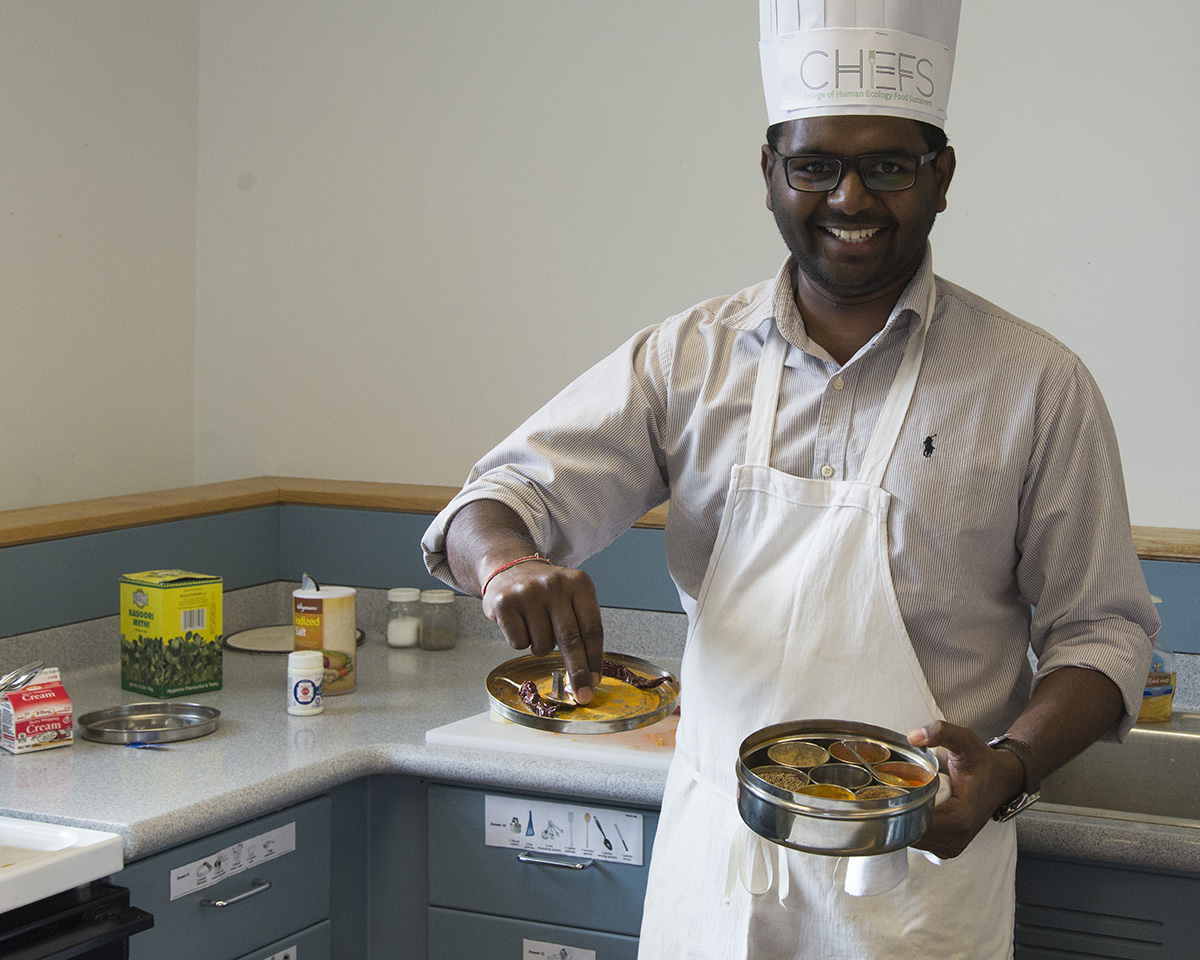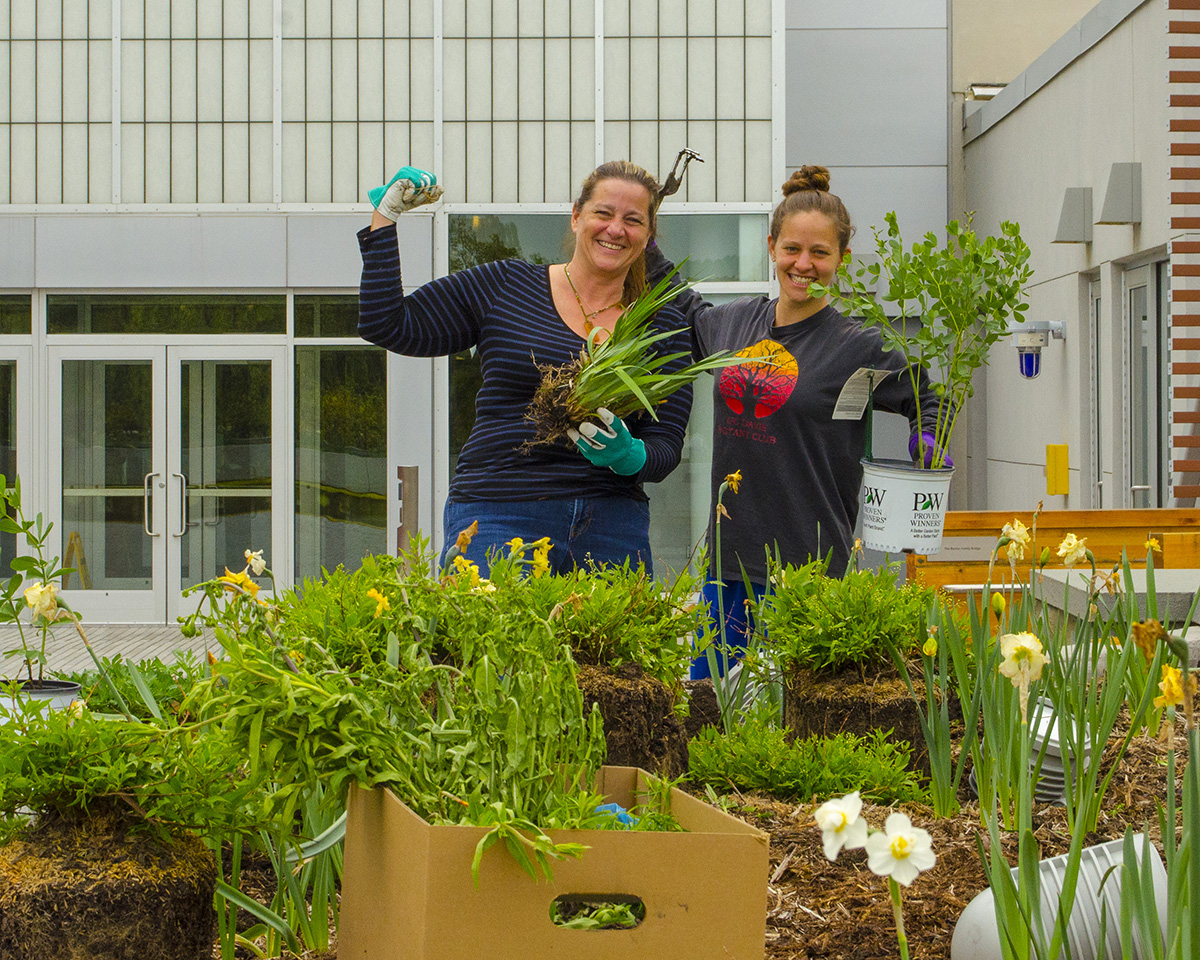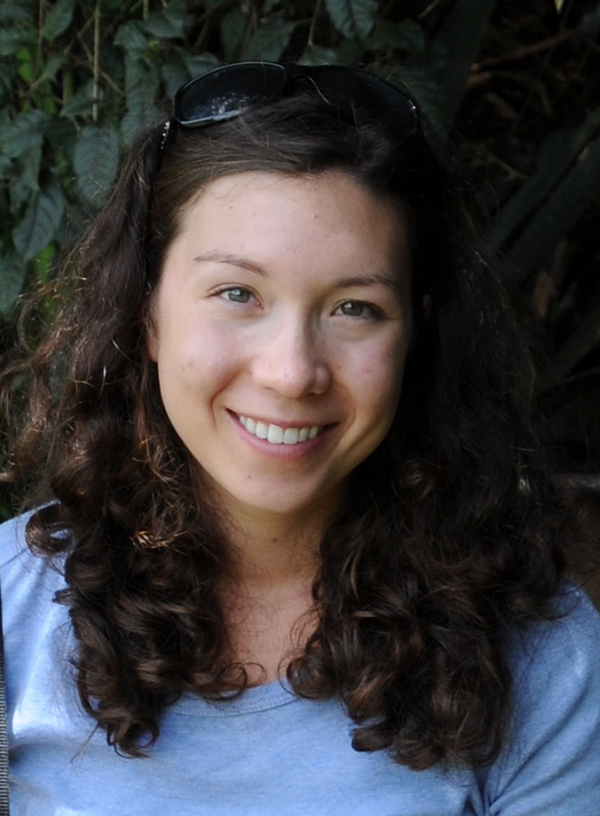Sustainability efforts take root at Human Ecology
 Every weekday, James Jones-Rounds loads his bike onto the front of a TCAT bus in downtown Ithaca and heads to the College of Human Ecology, where he manages a neuroscience lab. In his spare time, he volunteers as a master composter and is a member of a housing cooperative in a Fall Creek pocket neighborhood.
Every weekday, James Jones-Rounds loads his bike onto the front of a TCAT bus in downtown Ithaca and heads to the College of Human Ecology, where he manages a neuroscience lab. In his spare time, he volunteers as a master composter and is a member of a housing cooperative in a Fall Creek pocket neighborhood.
When he began supervising a lab five years ago, Jones-Rounds felt his commitment to the environment did not always align with the practices in his workplace. That changed in 2014, when the college launched a program to conserve energy and promote a culture of sustainability in its offices, labs and classrooms. Jones-Rounds became a “green ambassador,” a team leader who helps organize the grassroots campaign to make the college an environmentally friendly place.
Because of the efforts of Jones-Rounds and 47 other green ambassadors, the college’s program has become the most successful sustainability effort at Cornell, based on the amount of electricity it has helped conserve and the number of activities it has sponsored. The College of Engineering and the College of Veterinary Medicine have also launched comprehensive sustainability programs.
One of the key outcomes in the university’s sustainability program is reducing electricity usage in the annual Energy Smackdown competition. CHE green ambassador and competition promoter Trudy Radcliff said the contest has “led to a greater awareness around the college of how to do more with less,” resulting in an overall reduction in electrical use of almost 14 percent since 2014. Those savings allowed the college to lower its electricity budget by 32 percent, or $158,000, said Kristine Mahoney, the college’s director of facilities and operations.
As LEED (Leadership in Energy and Environmental Design) Platinum and Gold structures, Human Ecology’s two main academic structures already maximize energy conservation. The college’s sustainability program is part of Cornell’s Think Big, Live Green initiative, created in 2013 to enlist support for the university’s pledge to achieve carbon neutrality by 2035. To date, Cornell has achieved a 30 percent reduction in carbon emissions from its baseline level in 2008.
To help the college shrink its carbon footprint, green ambassadors have encouraged faculty and staff to make their offices and labs more sustainable by following a checklist of changes. Even the smallest gesture, such as bringing a plant to work to filter and refresh the air, is rewarded with points toward green certification.
Over the past two years, green ambassadors have certified 21 green offices and five green labs, Mahoney said. Faculty and staff have been evaluated on their offices and labs, and students will be assessed through a smartphone app, Humble Bee, developed by CHE graduate students and designed to engage and motivate students to change their behavior.
“The problem hasn’t been engaging staff – it’s been engaging students,” said Casey Franklin, a doctoral student in human behavior and design. “How do we reach a new generation that would rather play Pokémon Go than look at our sustainability website?”
Using Humble Bee, students will be able to record their actions, whether it’s taking the stairs instead of the elevator, eating vegan food at Martha’s Café or composting their leftovers after lunch. Upon reaching a set number of points, they level up and earn a reward, such as a free lunch or coffee. This spring, Franklin will test the prototype and conduct research on user behavior. By fall 2017, she hopes to introduce it to all Human Ecology students.
For faculty, a key focus is incorporating research that promotes environmental conservation. Denise Green ’07, assistant professor of fiber science and apparel design, for example, planted a natural dye garden in the courtyard behind the Human Ecology Building, which at the height of summer featured 13-foot-high Hopi dye sunflowers, Japanese indigo, purple basil and marigolds. To raise money for the garden, Green launched a crowdfunding campaign that generated more than $10,000, primarily from alumni.
While only a fraction of commercially produced textiles use natural dyes, Green says she wants to teach her students that there are alternatives to synthetics. “We’ve been destroying the environment pretty successfully for a long time, at least since the industrial revolution,” she said. “I hope to give our students the opportunity to think differently about the future of the apparel supply chain.”
Tasha Lewis, Ph.D. ’09, assistant professor of fiber science and apparel design, and collaborator Anil Netravali, the Jean and Douglas McLean Professor of Fiber Science and Apparel Design, have been developing a “fiberizer” to convert discarded fabrics into other products, including pillow stuffing, wall panels or placemats.
Funded by a $150,000 innovation grant from The Walmart Foundation, Lewis and Netravali are now creating an improved fiberizer, which could be used by small manufacturers to convert excess fabric into new products. “We want students to make real products out of the material,” Lewis said.
Last spring, a group of students, faculty, staff and community residents “upcycled” discarded fabric and other materials into new clothing and jewelry, including a dress made from newspaper and necklaces created from ties.
Green ambassadors remain focused on increasing the number of certified green offices and labs and creating new strategies to improve the college’s sustainability efforts. To help increase participation in the program, the college also plans to continue awarding $1,000 grants for student research on evidence-based behavior-intervention projects.
“What we’re trying to do now is figure out how to engage more people and get them excited to participate,” said Jones-Rounds.
This article is written by Sherrie Negrea and was published in the Cornell Chronicle on March 2, 2017.









